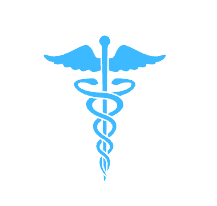
First aid guide lines
Talk to them.
Someone who is asleep will respond to stimuli. One way to determine if someone is sleeping is by talking to them. Kneel or bend next to the person and gently say their name, tell them to open their eyes, or ask them if they are all right. Repeat this for five minutes or until the person wakes up.
View WorkGently shake
the person.
Place your hand on their shoulder and gently shake them. You can do this in combination with saying their name or asking if they are awake. Do not shake them aggressively, shake their head, slap, or flick their face.
View WorkMake a loud noise.
Turning on the radio or TV, closing the door, loudly tapping on something, or playing an instrument may prompt someone to wake up, as well. However, do not play or make loud noises too close to the person’s ear. This may startle the person or cause damage to their hearing.
View WorkLook for symptoms
of unconsciousness.
If the person wakes up, then check for the following symptoms: amnesia, headache, confusion, lightheadedness, drowsiness, or a rapid heartbeat. Also, check to see if they have the ability to move all of their body parts
View WorkAsk them questions.
If the person wakes up, you will need to determine how alert they are. Do this by asking them simple questions such as, “What is your name?” “What is the date?” and “How old are you?”
View WorkCheck their breathing.
If the person is unresponsive, place one hand on their forehead and tilt their head back gently. Their mouth should slightly open reflexively. At the same time, place your other hand on their chin and lift it. Move your head close to the person’s mouth to see if you can feel their breath on your face or hear them breathing.
View WorkGive them something sweet.
Low blood sugar can cause a person to fall unconscious. If you or the person who fainted knows this is the cause, then give them something sweet to eat like a Jolly Rancher or another small candy. You can also give them something sweet to drink like Gatorade, juice, or lemonade. However, only do this after they regain consciousness.
View WorkRoll them.
Kneel by their side and place their arm closest to you at a right angle to their body with their palm facing up. Place their other hand across their chest with the back of their palm lying flat against their cheek. Hold this arm in place with your hand. Then, with your other hand, pull their farther knee up and over their other leg until their foot is flat on the ground. Gently pull on their lifted knee and roll them toward you until they are on their side. Now they are in a recovery position.
View WorkCall emergency services.
Once the person is in the recovery position, call emergency services for emergency medical help. Keep monitoring their breathing until the medics arrive. If they stop breathing you or someone else will need to perform CPR.
View WorkCPR
Knowing how to perform both methods of CPR (cardiopulmonary resuscitation) on an adult could save a life. However, the recommended method for performing CPR has changed relatively recently, and it is important to know the difference. In 2010, the American Heart Association made a radical change to the recommended CPR process for victims of cardiac arrest after studies showed that compression-focused CPR (with little mouth-to-mouth breathing) is as effective as the traditional approach.
View Work

